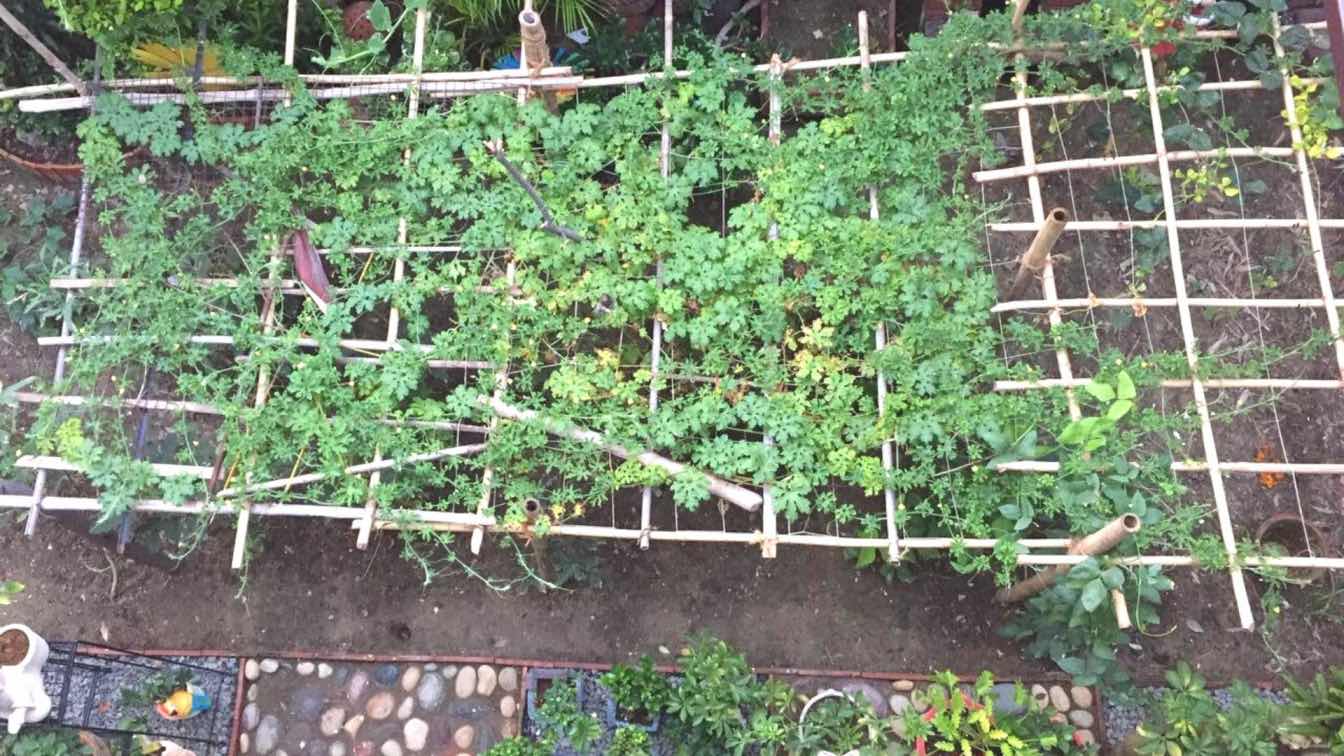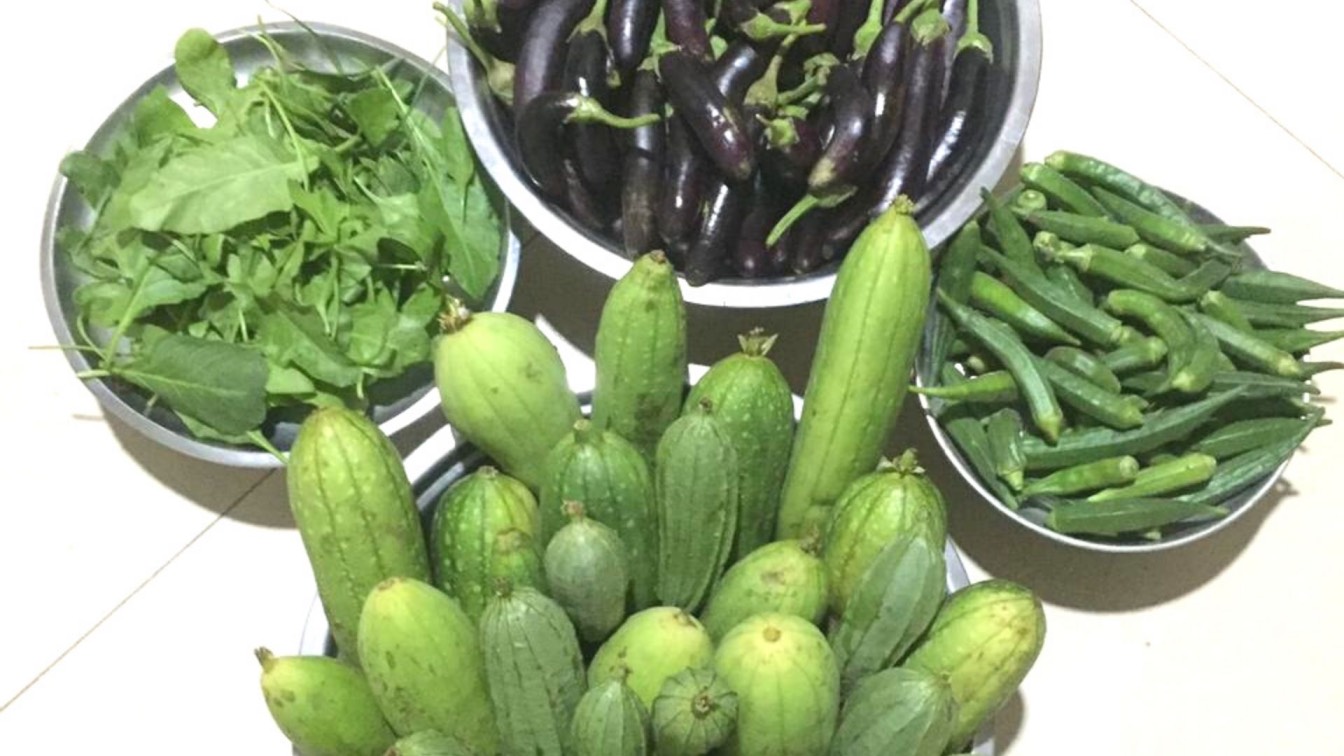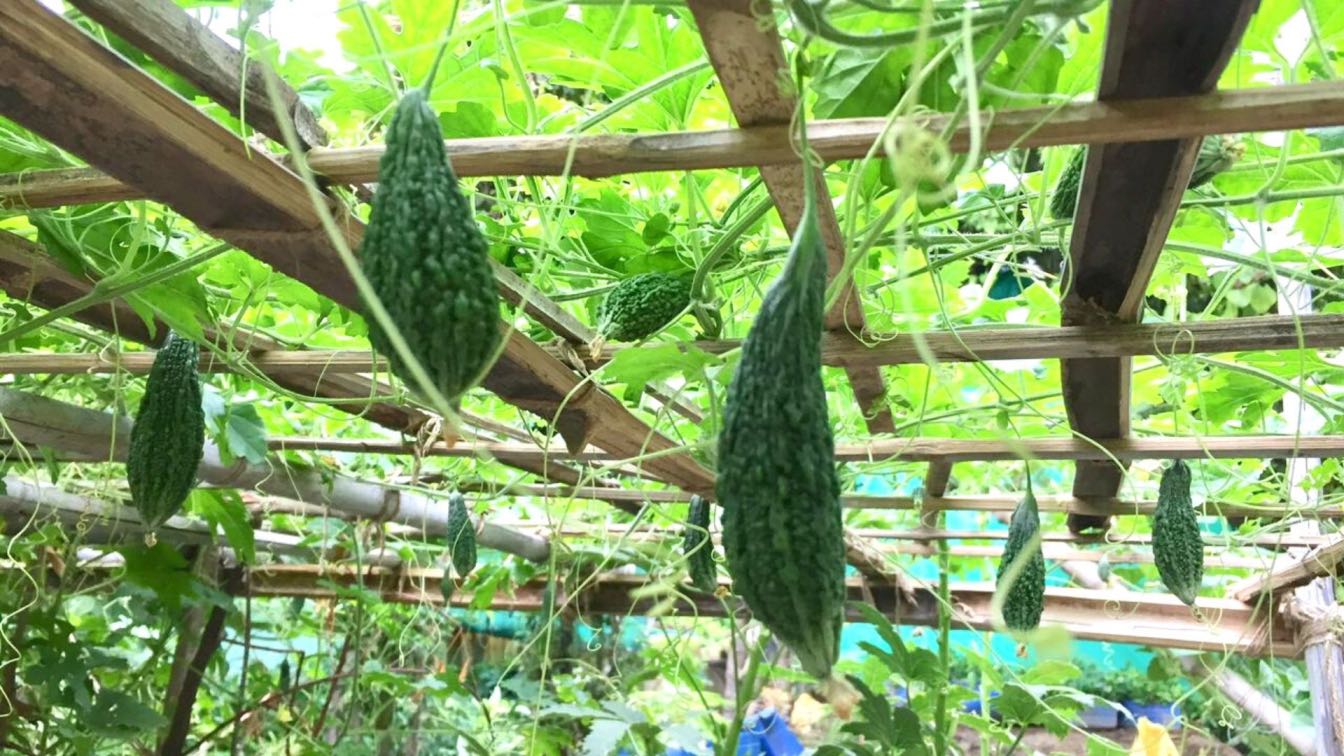With the approaching summer comes the sweltering heat, but also the season of hydrating watermelons and cucumbers to offer much-required respite. As we brace for temperatures to soar to unbearable degrees, Noida-based urban gardener, Harpreet Singh Ahluwalia, is preparing to battle the heat with natural ways to keep the body cool and refreshed.
The 59-year-old has been spending her mornings growing vitamin-rich vegetables in her terrace garden. “I grow around 75 varieties of vegetables through the year. However, summer vegetables entail creepers and plants, which require a lot of ground space. But the best part is that these creepers have a longer period of harvest, of 2-3 months, which allows larger produce,” she says.
Some vegetables, including leafy ones, can be grown in flower pots, and the produce will be just as good, Harpeet says. In a conversation with The Better India, she takes us through the process, step by step.
Gourds

“Bottle gourd, white gourd, bitter gourd, and pumpkins can easily be grown in the garden. The first step is to create an elevated platform and space for creepers. Make sure the creepers are easily accessible, which makes harvesting easy,” says Harpreet.
She adds that the best way to grow these gourds is to use the seeds of vegetables bought from the market. The seeds should be dried and pre-soaked overnight.
The next step is to sow them directly in the soil. “The seeds are big and cannot be spread across the soil. All summer vegetables take about 15 days of germination time before they start growing,” she says.
Okras, brinjal and chillies

“Okra can be an easy vegetable to grow. The only important thing to remember is to have a gap of about 18 inches between them. Also, they should be grown in rows,” Harpreet says.
As brinjal seeds are small, they need different treatment. “Germination can be done in a tray or in small pots, till they grow into seedlings. Then, they can be moved to a bigger pot,” she adds.
Chilly is also simple to grow. The seeds can directly be sown in the pots, Harpreet says, which makes the process easier.
Leafy vegetables
Mint, spinach, Amaranth or chaulai are another set of greens that demand less effort and attention to grow. “Roughly spread the seeds across the bed or pots. The other simple solution is to replant the roots of the vegetables bought from the market,” the urban gardener says.
Harpreet suggests keeping the stem of the plants in water for 2-3 weeks. “The roots will start growing again, thus making them ready to be planted in soil,” she adds.
Soil is key

Harpreet says the quality of soil plays a vital role in keeping plants – whether summer or winter – healthy. “The soil should always be porous, soft, and rich in nutrients. The mixture I prepare includes compost, organic, or farm manure, as well as leaf waste and garden soil. Then I add coco peat to the mixture and use the soil in pots,” she says.
She recommends adding the residue of neem leaves to the soil to protect it, as well as the plants, from infestation. “Spraying a solution of neem, turmeric or chilly spray every 15 days can help prevent a pest attack,” she adds.
Water, but only when needed
Another vital aspect of keeping the soil and plants healthy is meeting the water requirements. “Always check for moisture before watering the soil. Water the soil generously, only if it appears dry,” Harpreet recommends.
Harpreet says that one should also be careful about the timing for watering the plants. “Early morning before the sunrise and late evening when the day temperatures cool down are ideal timings. Watering plants in the afternoon during peak heat can prove to be unhealthy and may destroy them,” she adds.
Edited by Divya Sethu
No comments:
Post a Comment